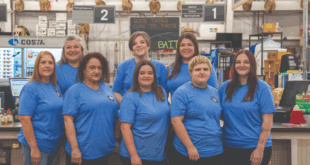 By Daniel Kurash
By Daniel Kurash
Certainly the point of any business is to make money. But how we get there is an obstacle every business faces. Whether it’s the independent channel where multiple departments garner different margins or a more service-based endeavor that requires subscription or tiered pricing, the challenges to achieve strong returns remains.
The unique relationship between value, price and quality often dictates what makes a sales idea work. Will a customer return if they don’t feel they’re getting a great product? Likewise, will they return if the quality and service doesn’t meet their expectations? There seems to be a larger connection needed to maintain a bench of established customers: We don’t just sell, we solve problems.
As it relates to merchandising, a similar approach to problem-solving can increase profit. As beneficial as stocking every item in block categories can be—such as plumbing parts—specifically stocking certain categories not only saves in-store inventory dollars, but also looks more presentable and thought-forward to a customer’s needs. As they say, less is more.
For example, it could make sense to stock up on water pumps, tarps, fittings and hose extensions when a string of heavy rain is forecasted. Or, if it’s baseball spring training season, you can cross-merchandise your seasonal grills section with branded pro sports teams’ barbeque spice rubs to gain additional sales. Leveraging a retail environment that demonstrates awareness and excitement helps profit channels.
Author Paco Underhill, who wrote “Why We Buy” and has also served the industry with years of research regarding customer behavior, says there are many factors that go into the psychology of buying. From the mechanics of shopping (tactics to highlight products, aisle logistics and signage) to dynamics elevating one’s five senses (calming versus upbeat music usage, pleasant smells, welcoming color patterns and displays versus), Underhill’s findings can certainly be useful to help increase store sales.
“Remember that more than 60% of what we buy wasn’t on our list,” Underhill says. “You’ve got to plan for the nonshopper as much as the shopper.”
When merchandising, planning for unknown customer needs could uncover newfound areas of growth in terms of new items to stock and a new way to merchandise. Listen to your customer’s requests, look for trends within those conversations and stock based on practicality. Collectively, they can impact sales one transaction at a time.
Daniel Kurash is a store manager for JC Licht, the Midwest’s largest retailer of Benjamin Moore paint and a leader in high-quality wallpaper and window treatments. He has a degree in print journalism from the University of Illinois at Urbana-Champaign, and has worked in the newspaper and public relations industries. He lives in Illinois with his wife and children.
 Hardware Retailing The Industry's Source for Insights and Information
Hardware Retailing The Industry's Source for Insights and Information






